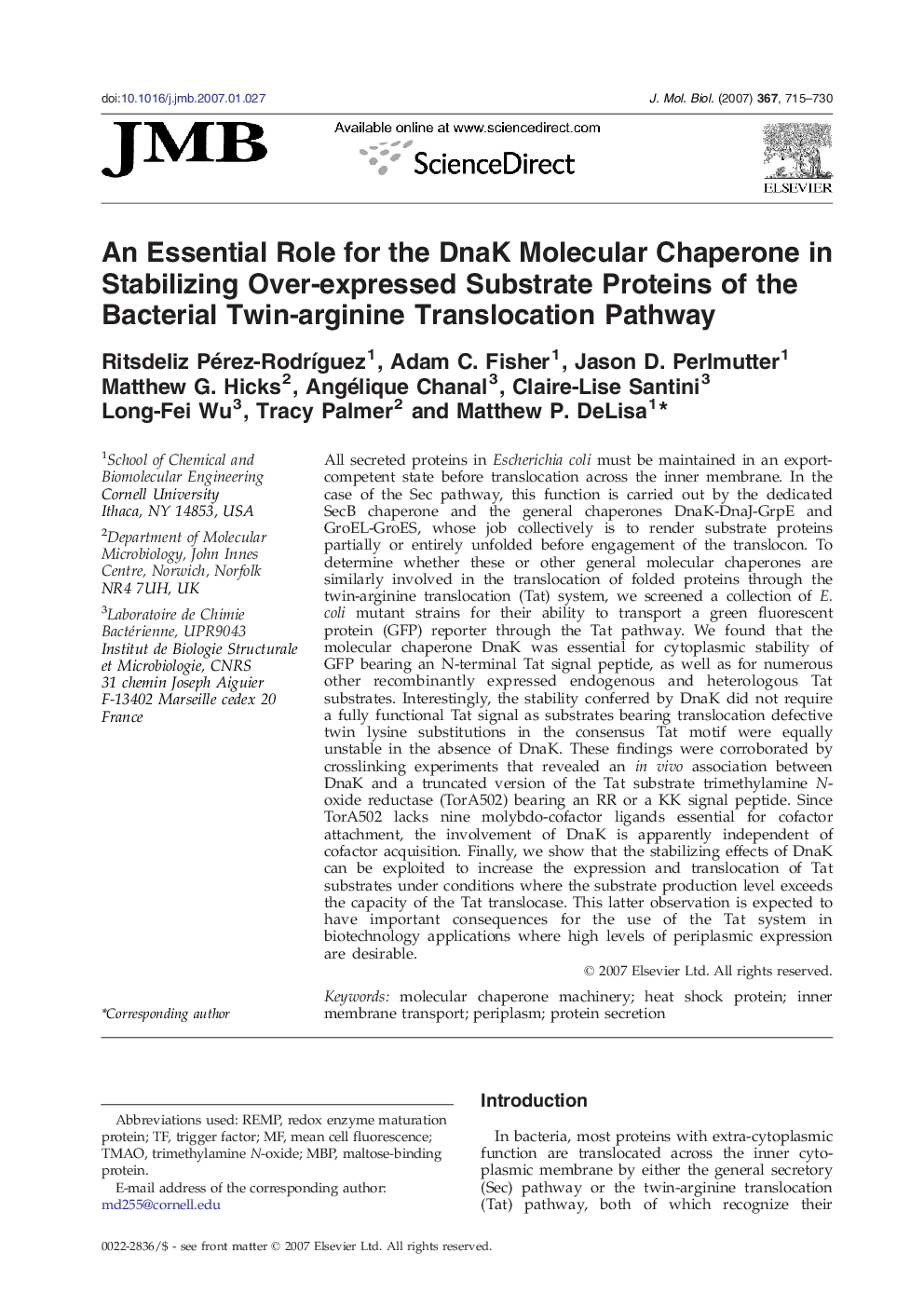| Article ID | Journal | Published Year | Pages | File Type |
|---|---|---|---|---|
| 2188297 | Journal of Molecular Biology | 2007 | 16 Pages |
All secreted proteins in Escherichia coli must be maintained in an export-competent state before translocation across the inner membrane. In the case of the Sec pathway, this function is carried out by the dedicated SecB chaperone and the general chaperones DnaK-DnaJ-GrpE and GroEL-GroES, whose job collectively is to render substrate proteins partially or entirely unfolded before engagement of the translocon. To determine whether these or other general molecular chaperones are similarly involved in the translocation of folded proteins through the twin-arginine translocation (Tat) system, we screened a collection of E. coli mutant strains for their ability to transport a green fluorescent protein (GFP) reporter through the Tat pathway. We found that the molecular chaperone DnaK was essential for cytoplasmic stability of GFP bearing an N-terminal Tat signal peptide, as well as for numerous other recombinantly expressed endogenous and heterologous Tat substrates. Interestingly, the stability conferred by DnaK did not require a fully functional Tat signal as substrates bearing translocation defective twin lysine substitutions in the consensus Tat motif were equally unstable in the absence of DnaK. These findings were corroborated by crosslinking experiments that revealed an in vivo association between DnaK and a truncated version of the Tat substrate trimethylamine N-oxide reductase (TorA502) bearing an RR or a KK signal peptide. Since TorA502 lacks nine molybdo-cofactor ligands essential for cofactor attachment, the involvement of DnaK is apparently independent of cofactor acquisition. Finally, we show that the stabilizing effects of DnaK can be exploited to increase the expression and translocation of Tat substrates under conditions where the substrate production level exceeds the capacity of the Tat translocase. This latter observation is expected to have important consequences for the use of the Tat system in biotechnology applications where high levels of periplasmic expression are desirable.
